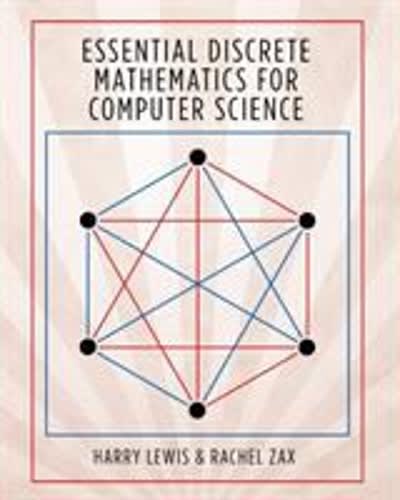Answered step by step
Verified Expert Solution
Question
1 Approved Answer
You are conducting a study to see if the proportion of voters who prefer the Democratic candidate is significantly smaller than 63% at a level
You are conducting a study to see if the proportion of voters who prefer the Democratic candidate is significantly smaller than 63% at a level of significance of
= 0.01. According to your sample, 32 out of 54 potential voters prefer the Democratic candidate.
- For this study, we should useSelect an answerz-test for a population proportiont-test for a population mean
- The null and alternative hypotheses would be:
- Ho:?pSelect an answer>=<(please enter a decimal)
- H1:?pSelect an answer<=>(Please enter a decimal)
- The test statistic?tz=(please show your answer to 3 decimal places.)
- The p-value =(Please show your answer to 4 decimal places.)
- The p-value is?>
- Based on this, we shouldSelect an answerfail to rejectacceptrejectthe null hypothesis.
- Thus, the final conclusion is that ...
- The data suggest the populaton proportion issignificantlysmaller than 63% at
- = 0.01, so there is sufficient evidence to conclude that the proportion of voters who prefer the Democratic candidate is smaller than 63%
- The data suggest the population proportion is notsignificantlysmaller than 63% at
- = 0.01, so there is not sufficient evidence to conclude that the proportion of voters who prefer the Democratic candidate is smaller than 63%.
- The data suggest the population proportion is notsignificantlysmaller than 63% at
- = 0.01, so there is sufficient evidence to conclude that the proportion of voters who prefer the Democratic candidate is equal to 63%.
- Interpret the p-value in the context of the study.
- There is a 63% chance of a Type I error.
- If the sample proportion of voters who prefer the Democratic candidate is 60% and if another 54 voters are surveyed then there would be a 28.46% chance of concluding that fewer than 63% of all voters surveyed prefer the Democratic candidate.
- If the population proportion of voters who prefer the Democratic candidate is 63% and if another 54 voters are surveyed then there would be a 28.46% chance fewer than 60% of the 54 voters surveyed prefer the Democratic candidate.
- There is a 28.46% chance that fewer than 63% of all voters prefer the Democratic candidate.
- Interpret the level of significance in the context of the study.
- If the population proportion of voters who prefer the Democratic candidate is 63% and if another 54 voters are surveyed then there would be a 1% chance that we would end up falsely concluding that the proportion of voters who prefer the Democratic candidate is smaller than 63%
- There is a 1% chance that the earth is flat and we never actually sent a man to the moon.
- There is a 1% chance that the proportion of voters who prefer the Democratic candidate is smaller than 63%.
- If the proportion of voters who prefer the Democratic candidate is smaller than 63% and if another 54 voters are surveyed then there would be a 1% chance that we would end up falsely concluding that the proportion of voters who prefer the Democratic candidate is equal to 63%.
Step by Step Solution
There are 3 Steps involved in it
Step: 1

Get Instant Access to Expert-Tailored Solutions
See step-by-step solutions with expert insights and AI powered tools for academic success
Step: 2

Step: 3

Ace Your Homework with AI
Get the answers you need in no time with our AI-driven, step-by-step assistance
Get Started


